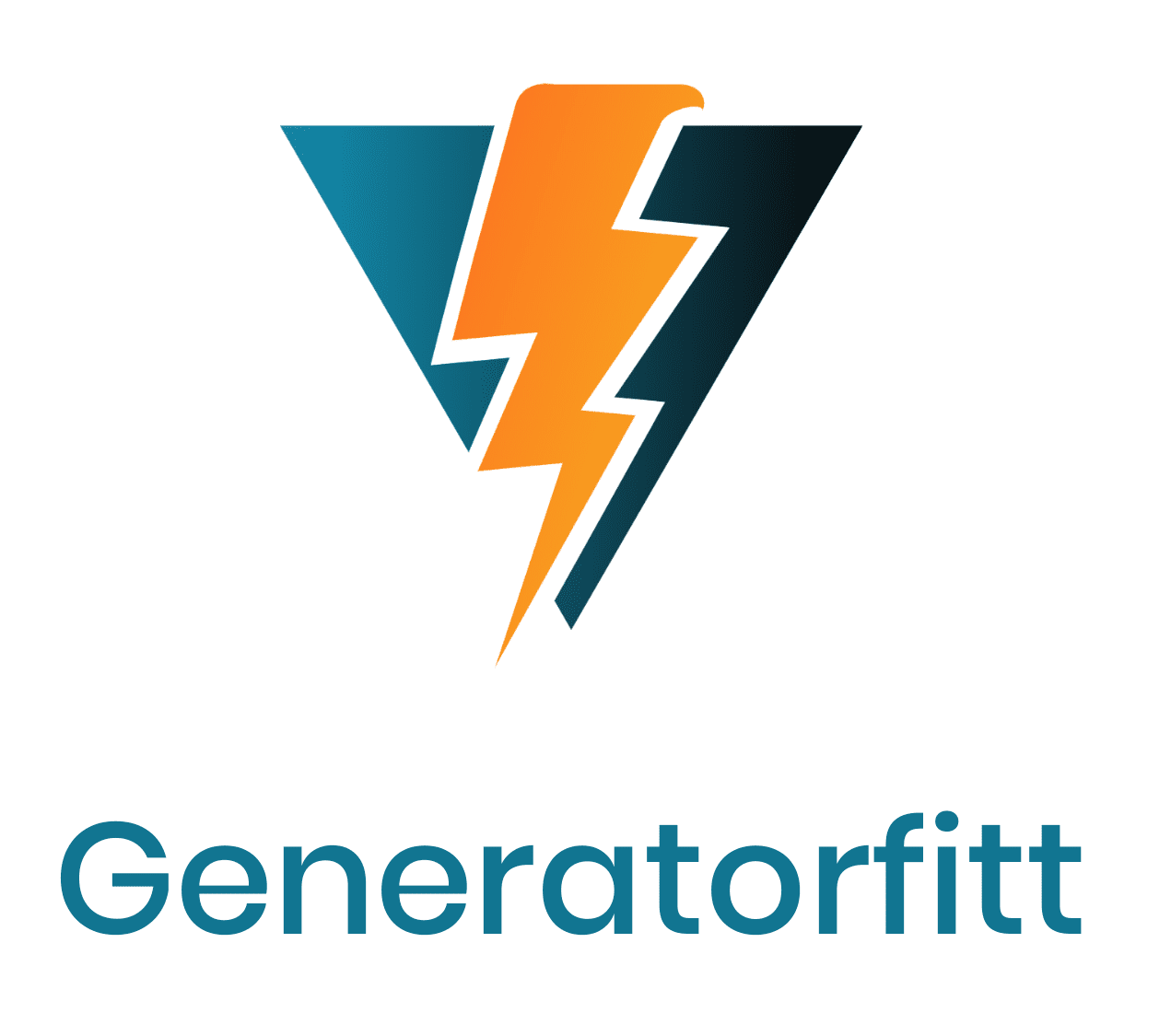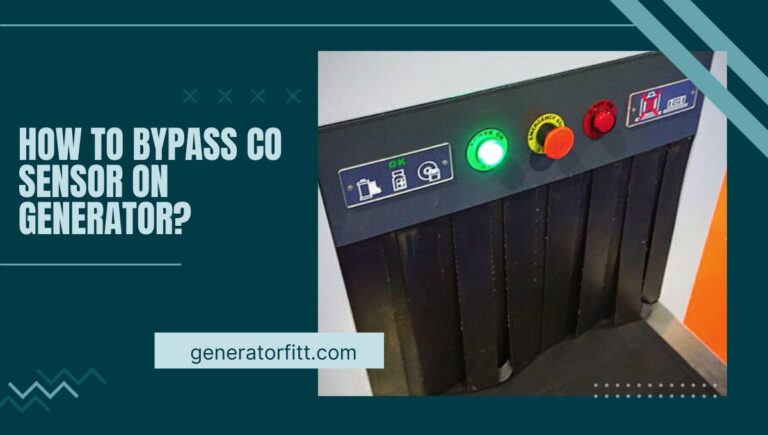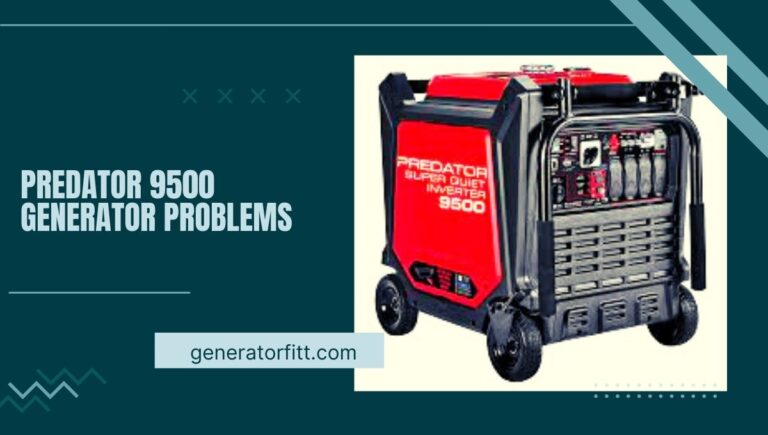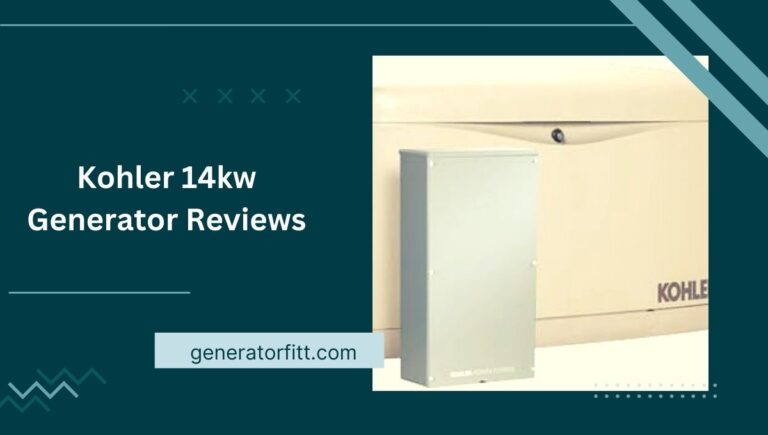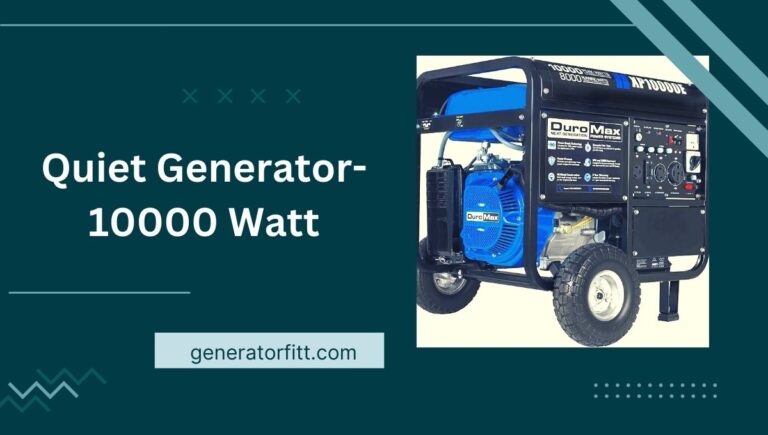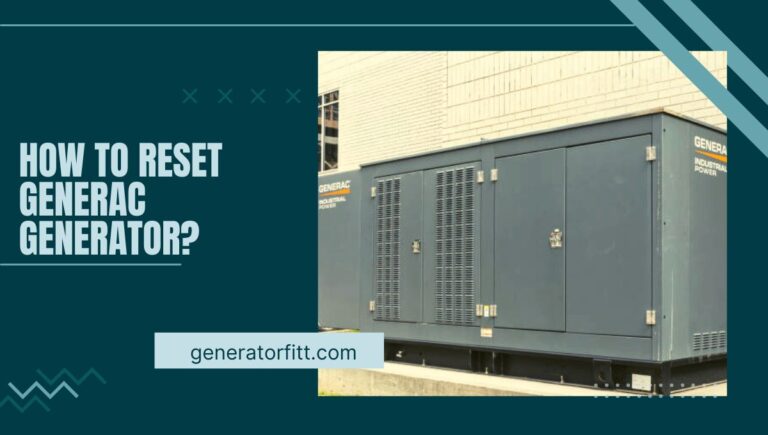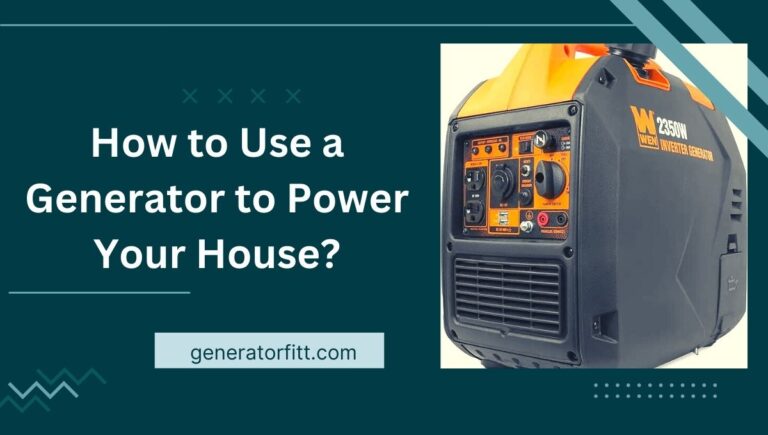Onan Generator Starter Problems: (Solution Tips) of 2023
Onan Generator Starter Problems, Onan generators are a reliable power source for various applications, from recreational vehicles to backup power for homes. However, like any mechanical equipment, they can experience issues over time.
One common problem that generator owners encounter is starter-related difficulties. In this article, we will explore the common starter problems in Onan generators, discuss troubleshooting methods, and provide preventive measures to keep your generator running smoothly.
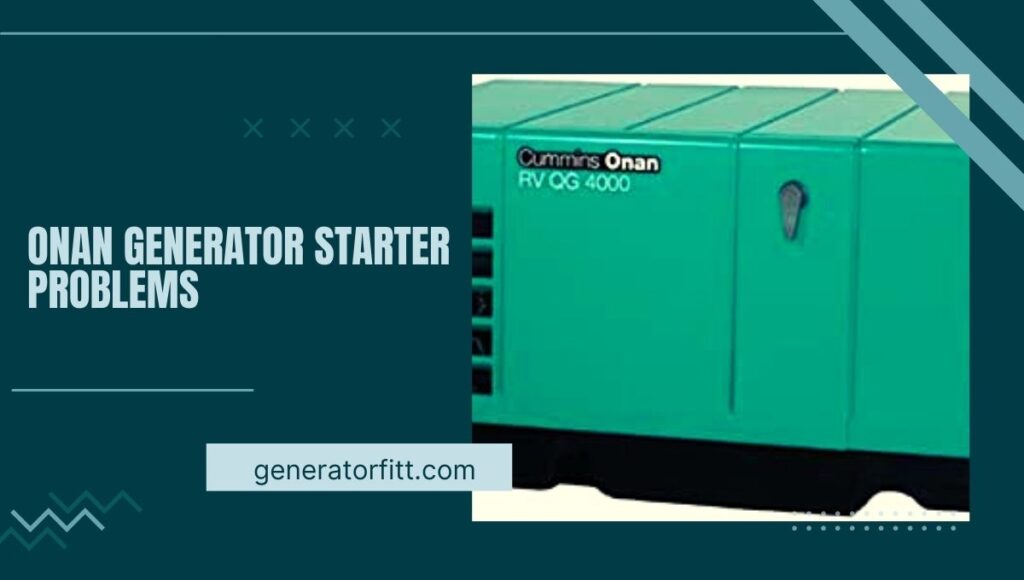
Onan Generator Starter Problems
Onan generators can experience starter problems, which can hinder their ability to provide reliable power. Potential issues include a faulty starter motor, weak battery, corroded connections, malfunctioning ignition switch, or a defective starter solenoid.
Troubleshooting steps involve checking the battery charge, inspecting connections for corrosion or looseness, and testing the starter motor for damage. Replacing faulty components may be necessary to resolve the problem and ensure the generator starts smoothly.
The Onan Generators and Their Importance
Before diving into starter problems, let’s first understand the significance of Onan generators. Onan is a renowned brand in the power generation industry, known for producing reliable and durable generators.
Onan generators are widely used in various applications, including RVs, boats, and as backup power sources for residential and commercial buildings.
DB Electrical 410-21025 Starter Compatible
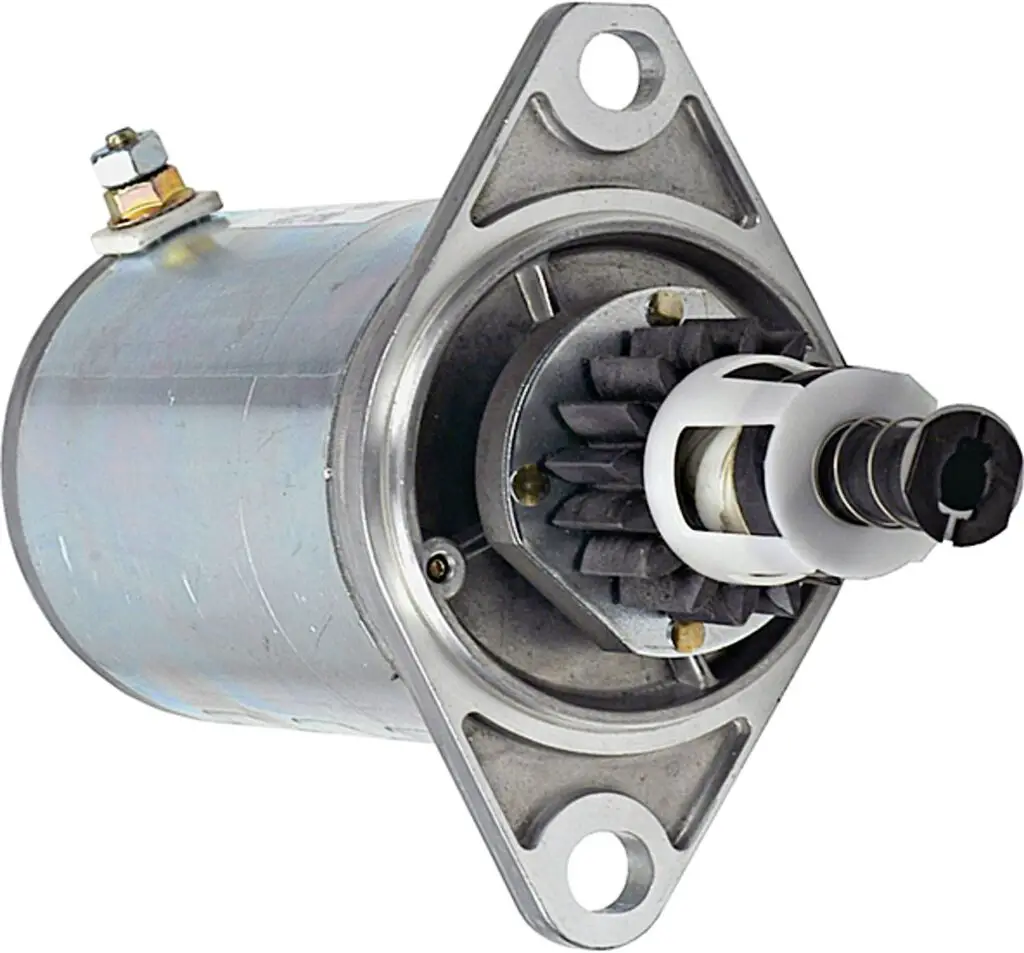
The DB Electrical 410-21025 starter is designed to fit specific makes and models of vehicles or equipment. However, to ensure compatibility, it is essential to check the product specifications and verify that it matches the requirements of your application.
You can consult with the manufacturer or a reputable automotive parts retailer for further assistance in determining whether this starter is suitable for your needs. Remember, using the correct compatible starter is crucial for optimal performance and safety.
Pros
- Reliability: A well-designed starter can offer reliable and consistent performance, ensuring smooth engine starting every time.
- Ease of Installation: Many starters are designed to be easy to install, reducing the time and effort required for replacement.
- Compatibility: When a starter is advertised as compatible, it should fit and work seamlessly with the intended application, ensuring a proper fit and functionality.
- Warranty: Quality starters often come with a warranty, providing some assurance and protection against potential defects.
- Improved Starting Performance: A high-quality starter can lead to improved starting performance, especially in challenging conditions like cold weather.
Cons
- Reliability: A well-designed starter can offer reliable and consistent performance, ensuring smooth engine starting every time.
- Ease of Installation: Many starters are designed to be easy to install, reducing the time and effort required for replacement.
Common Starter Problems in Onan Generators
When it comes to starter problems in Onan generators, several potential issues can arise. Identifying these problems early on and addressing them promptly can prevent more significant damage and costly repairs.
Let’s explore some of the common starter problems:
Battery Issues
The battery plays a crucial role in providing the necessary electrical power to start the generator. However, several battery-related problems can hinder the starter’s functionality.
Dead Battery
A dead battery is a prevalent issue that can prevent the generator from starting. This occurs when the battery has insufficient charge or fails to hold a charge.
Common causes of a dead battery include leaving the generator unused for an extended period, a faulty charging system, or a drained battery due to excessive power usage.
Weak Battery
Even if the battery is not completely dead, it may be weak and unable to provide the required power to start the generator. A weak battery can result from age, low electrolyte levels, or poor maintenance.
Faulty Starter Motor
The starter motor is responsible for cranking the generator’s engine. If the starter motor fails or becomes faulty, it will not be able to provide the necessary rotation for the engine to start. Issues such as worn-out brushes, damaged solenoids, or a seized armature can cause starter motor problems.
Ignition Switch Problems
The ignition switch controls the electrical circuit that activates the starter motor. If the ignition switch malfunctions,it can prevent the starter from engaging. Problems with the ignition switch can range from loose connections to complete failure.
Wiring and Connection Troubles
Faulty wiring and poor connections can disrupt the flow of electrical current needed for the starter to function correctly. Loose or corroded connections, damaged wires, or frayed cables can impede the starter’s performance.
Fuel System Issues
An insufficient fuel supply or problems within the fuel system can prevent the generator from starting. Issues such as clogged fuel filters, fuel line obstructions, or a faulty fuel pump can disrupt the combustion process.
Low Oil Level
Some Onan generators have an oil level sensor that prevents the engine from starting if the oil level is too low. This safety feature protects the generator from damage caused by inadequate lubrication. Therefore, a low oil level can prevent the generator from starting.
Other Possible Causes
In addition to the common problems mentioned above, other factors can contribute to starter issues in Onan generators. These may include a malfunctioning control board, a faulty solenoid, or a defective key switch.
Troubleshooting Onan Generator Starter Problems
When faced with a starter problem in your Onan generator, there are several steps you can take to diagnose and resolve the issue. Here are some troubleshooting methods:
Checking the Battery
Start by inspecting the battery and ensuring it has sufficient charge. Use a multimeter to measure the voltage and check for any signs of a dead or weak battery. If the battery is low on charge, try recharging it using an appropriate charger. If the battery is beyond repair, consider replacing it with a new one.
Inspecting the Starter Motor
Examine the starter motor for any visible signs of damage or wear. Check the brushes, solenoids, and connections for any loose or faulty components. Clean any accumulated debris or corrosion that may hinder the motor’s performance. If necessary, consult the generator’s manual for specific instructions on disassembling and troubleshooting the starter motor.
Examining the Ignition Switch
Inspect the ignition switch for any loose connections or signs of damage. Verify that the switch is functioning correctly by testing it with a multimeter. If the ignition switch is faulty, consider replacing it with a compatible one recommended by the generator manufacturer.
Inspecting the Wiring and Connections
Thoroughly examine the wiring and connections associated with the starter system. Look for loose or corroded connections, damaged wires, or any visible signs of wear. Ensure all connections are tight and free from debris. Repair or replace any faulty components as necessary.
Ensuring Sufficient Fuel and Oil Levels
Check the fuel level in the generator’s tank and ensure it is adequate for proper operation. Inspect the fuel lines and filters for any obstructions or damage. If the oil level sensor is present, verify that the oil level is within the recommended range. Add fuel or oil as needed, following the manufacturer’s guidelines.
Seeking Professional Assistance
If troubleshooting the starter problem on your own proves challenging or if you are uncertain about performing certain tasks, it is recommended to seek professional assistance. An experienced technician familiar with Onan generators can diagnose the problem accurately and provide appropriate solutions.
Preventive Measures for Onan Generator Starter Problems
While troubleshooting starter problems is essential, implementing preventive measures can help minimize the occurrence of such issues.
Here are some preventive steps to consider:
Regular Maintenance and Inspections
Perform regular maintenance tasks as recommended by the generator manufacturer. This includes inspecting and cleaning the starter system components, checking the battery’s health, and ensuring all connections are secure. Regular maintenance can help identify and address potential starter problems before they escalate.
Battery Maintenance
Maintain the generator’s battery properly by keeping it clean and free from corrosion. Regularly check the battery’s electrolyte levels and ensure they are within the recommended range. Additionally, avoid discharging the battery excessively and consider using a battery maintainer during periods of inactivity.
Keeping the Generator Clean and Dry
Keep the generator clean and free from dirt, debris, and moisture. Regularly remove any accumulated dust or grime using a soft brush or cloth. Ensure that the generator is stored in a dry and well-ventilated area to prevent moisture-related issues.
Proper Storage during Off-season
If you plan to store the generator for an extended period, take appropriate measures to protect it. Clean the generator thoroughly, change the oil, and stabilize the fuel to prevent deterioration. Consider removing the battery and storing it separately in a cool and dry location.
People also ask
Why does my generator crank but not start?
If your generator cranks but does not start, it indicates that there is an issue preventing the combustion process from taking place. Common reasons for this problem include a lack of fuel reaching the engine, a faulty spark plug, a clogged fuel filter, or an ignition problem.
Inspecting and addressing these potential issues can help diagnose and resolve the problem, ensuring your generator starts and operates properly.
What do you do when your RV generator won’t start?
When your RV generator won’t start, there are a few steps you can take to troubleshoot the issue. First, check the fuel level and ensure it is sufficient. Next, inspect the battery and ensure it has enough charge. Clean the battery terminals if necessary.
Verify that the generator’s fuel valve is open and the ignition switch is in the proper position. If the generator has been sitting unused for a while, priming the fuel system may be necessary.
If these steps don’t solve the problem, it is recommended to consult the generator’s manual or seek professional assistance to diagnose and fix the issue.
Why is my Cummins generator not cranking?
If your Cummins generator is not cranking, it could be due to several reasons. One possibility is a dead or weak battery, which may need to be recharged or replaced.
Another potential cause could be a faulty starter motor, which might require inspection and repair. Additionally, check the wiring connections and ensure they are secure.
If the issue persists, it is advisable to consult a professional technician or refer to the generator’s manual for further troubleshooting and resolution.
How do you force-start a generator?
To force-start a generator, follow these steps:
Check the fuel level and ensure there is an adequate supply.
Make sure the generator’s switch or control panel is in the “Off” position.
Locate the generator’s recoil starter or electric start button.
If it has a recoil starter, grab the starter handle firmly and give it a quick, strong pull to start the engine.
If it has an electric start, press and hold the start button until the generator starts.
Once the generator starts running, monitor it to ensure it is operating smoothly.
Why does my generator start up and then quit?
If your generator starts up and then quickly shuts down, it could be due to a few reasons. One common cause is a lack of fuel reaching the engine.
This could be caused by a clogged fuel filter, a malfunctioning fuel pump, or insufficient fuel in the tank. Another possibility is a problem with the carburetor, such as a clogged jet or a faulty float valve.
Additionally, issues with the ignition system, such as a faulty spark plug or ignition coil, could also lead to the generator starting and then quitting.
It’s recommended to check these components and consult the generator’s manual for troubleshooting steps specific to your model.
Conclusion
In conclusion, this can occur in Onan generators, affecting their ability to provide consistent power. Issues such as a faulty starter motor, weak battery, corroded connections, malfunctioning ignition switch, or defective starter solenoid can contribute to these problems.
It is essential to perform troubleshooting steps, including checking the battery charge, inspecting connections, and testing the starter motor, to identify and address the root cause of the issue.
By promptly resolving starter problems and replacing faulty components when necessary, Onan generator owners can ensure smooth and reliable start-ups, allowing them to continue enjoying the benefits of their generator’s power supply.
Hi, I am Brines Loe and I am an Expert in Generators I have Experience in This Field I want to Help You About This Website! Welcome to our generator (Outdoor) Guide blog! We are dedicated to providing you with the latest information and tips on outdoor generators, ensuring that you have the knowledge you need to make informed decisions about which generator is right for you.
